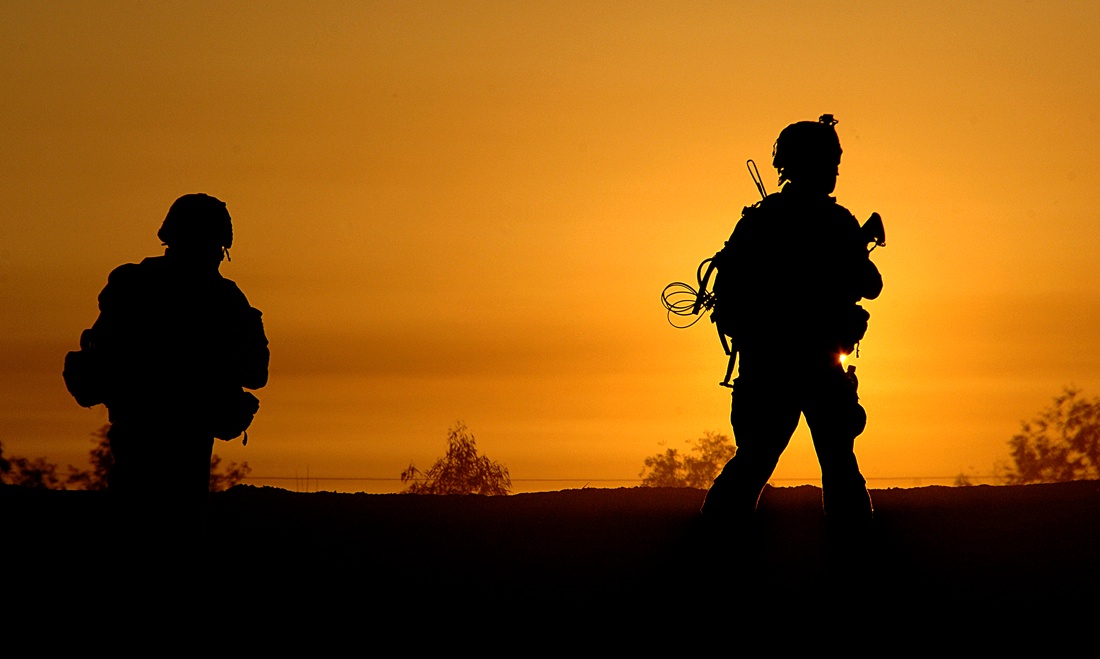Combat Blasts May Give Troops Same Brain Disease as Athletes

Members of the military exposed to blasts in combat can develop the same brain disease as professional athletes who experience multiple concussions, a new study suggests.
Researchers found evidence of chronic traumatic encephalopathy, or CTE, in the brains of all four deceased U.S. military veterans they examined. The men were exposed to blasts or to multiple concussions during combat.
CTE is a degenerative brain disease previously seen mainly in professional athletes, including boxers, hockey players and football players. It is usually caused by repeated blows to the head, but results from the new study suggests that exposure to a single blast equivalent to that of a improvised explosive device (IED) can result in CTE. The condition causes symptoms such as impaired learning and memory, and has been linked with suicide, the researchers said.
"Our study, for the first time, shows military personnel that have experienced blast exposure exhibit CTE that's basically indistinguishable from the athletes we've looked at," said study researcher Patric Stanton, a cell biology professor at New York Medical College in Valhalla, N.Y.
The findings indicate that brain injuries with different causes — concussions and exposure to blasts — may trigger the same disease in the brain, Stanton said.
The link between CTE and suicide can be seen in the case of former National Football League star Dave Duerson, who committed suicide last year. An examination of his brain after his death revealed he had CTE, as he suspected. CTE has also been suspected of playing a role the suicide of NFL player Junior Seau earlier this month.
The new findings suggest that blasts on the battlefield may lead to suicidal thoughts in veterans, Stanton said. Blasts may be a factor in the recent rise in military suicides, he said, and researchers should investigate this..
Get the world’s most fascinating discoveries delivered straight to your inbox.
Degenerative brain disease
The researchers analyzed the brains of four male military veterans, ages 22 to 45 (CTE can be diagnosed only after death). Three of the men had been exposed to at least one blast from an IED, and two of them had concussions earlier in life. One soldier experienced four concussions throughout his life, although he was not exposed to a blast.
All the men had symptoms such as headaches, irritability, difficulty sleeping, depression and short-term memory loss.
One man died from a brain aneurysm, one from a brain hemorrhage and one from a self-inflicted gunshot wound. The fourth man inhaled foreign material while under the influence of pain medication and later died from lung complications. About two years had passed between their last brain injury and their death.
The researchers also examined the brains of three football players, a professional wrestler and four men of similar ages with no history of blast exposure or concussions.
Signs of CTE were seen in the brains of the military veterans and the professional athletes. One characteristic of CTE is abnormal deposits of a protein called tau, which can kill brain cells, Stanton said.
Mouse model
It can be difficult to say whether CTE was definitely caused by a blast, by previous events in a person's life, or a combination of both, Stanton said.
To study CTE in a more controlled environment, the researchers created a mouse model and simulated blasts from an IED.
The rapid movement of air that occurs after an explosion may play the biggest role in causing blast-related brain injuries, Stanton said. This blast wind can be stronger than the winds of a hurricane, and can rapidly shake the head back and forth, compressing the brain, Stanton said.
About two weeks after exposure to a simulated blast, the mice showed learning and memory problems. These problems were averted when the animals' heads were prevented from moving during the blast, the researchers said.
The findings provide a new pathway for developing methods to prevent blast-related brain injuries, the researchers said.
The study is published today (May 16) in the journal Science Translational Medicine. Study experiments were conducted by researchers at Boston University, New York Medical College and the Veterans Affairs Boston Healthcare System.
Pass it on: Military members exposed to blasts may be at risk for a degenerative brain disorder most commonly seen in professional athletes who experience multiple concussions.
Follow MyHealthNewsDaily staff writer Rachael Rettner on Twitter @RachaelRettner. Find us on Facebook.

Rachael is a Live Science contributor, and was a former channel editor and senior writer for Live Science between 2010 and 2022. She has a master's degree in journalism from New York University's Science, Health and Environmental Reporting Program. She also holds a B.S. in molecular biology and an M.S. in biology from the University of California, San Diego. Her work has appeared in Scienceline, The Washington Post and Scientific American.
